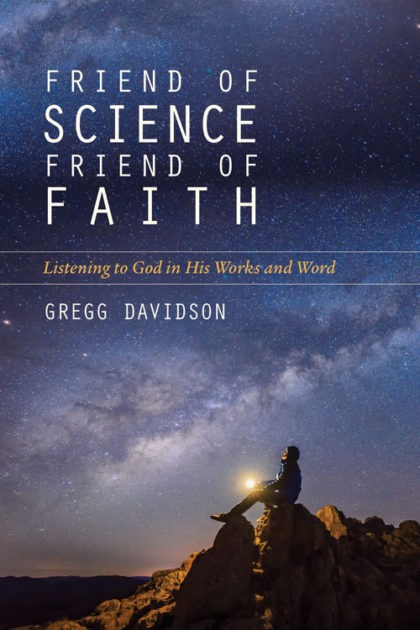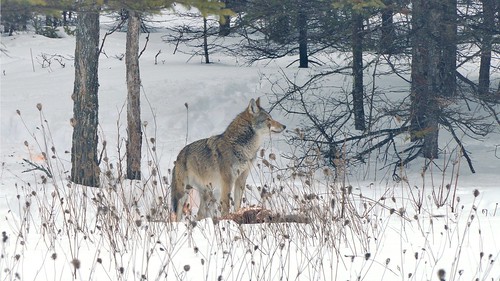
In Friend of Science, Friend of Faith, geologist Gregg Davidson explains how he maintains a simultaneous commitment to the Christian church and the academic science community. If those overlapping fellowships seem unremarkable to you, you may not find anything particularly new here although you may appreciate the opportunity to get to know Davidson and his take on the matters at hand. Although wide-ranging, the book is not a survey of the entire landscape of Christian approaches to science. Rather, Davidson gives his answers to typical questions about how and why a Christian can affirm Big Bang cosmology, an ancient Earth and common ancestry of all living organisms–questions he has evidently fielded many times from students and presumably colleagues and fellow believers as well. If you or someone you know is coming to such questions for the first time or curious about the perspective of a scientist with a career in a relevant field and experience in the broader conversation, this is a reasonable introduction with a couple of caveats.
Davidson organizes his thoughts in five parts. Part 1 provides contemporary and historical context. A student anecdote drives home that there are real stakes and real needs for greater information. The case of Galileo reminds us that ours is not the first era in which new scientific findings raised questions about Biblical interpretation. This sets up Part 2 for delving into how we read and understand the Bible. There is no explicit goal of making scripture work with science no matter what, but Davidson keeps an eye towards having to confront questions of apparent conflict. Other hermaneutics are of course available, but Davidson’s is respectful of the text and tradition and his conclusions lean conservative relative to others in this conversation who draw similar scientific conclusions. I imagine that will be appealing, perhaps even reassuring to some readers.
Parts 3 and 4 are the most substantial and probably address the questions most people start with. Part 3 tackles common points of perceived conflict between what the Bible claims and what science currently claims, including the timing & mechanisms of creation, sin & the fall, and the extent of Noah’s flood. Davidson discusses each topic by looking at the Bible first: what it claims, what it doesn’t and where there is ambiguity. Then he gives the view from science before summarizing why he thinks there are no significant points of clear disagreement, at least in some cases by noting significant uncertainty from both directions. Here Davidson walks a tricky line, having already rejected the possibility that the ancient writers were expressing scientific concepts ahead of their time but still desiring to grant as much historically and scientifically to the texts as feasible.
Only after dealing with the Biblical matters does Davidson get into the scientific evidence in Part 4. He highlights illustrative findings which lead many scientists to conclude the Earth and the universe are billions of years old, all life is descended from a common ancestral population, and humans share ancestry with apes. The geological evidence for an old Earth and the fossil evidence for common ancestry are covered in most detail, befitting a geologist, but some cosmology and molecular biology is covered as well. I spotted a few places here and there to quibble with the details (e.g. when discussing the origin of life, he describes the simplest cells has having “complex organelles” (p 186); while all eukaryotes and some bacteria do have organelles, most bacteria do not) but none would change the strength of the evidence or conclusions if corrected. Appropriately, his goal is to be accessible to a wide audience rather than comprehensively technical, and I think he is successful.

 )
)Most challenging for me was Part 5 which directly confronts the topics of Young Earth Creationism and Intelligent Design (ID). Up to this point, Davidson has largely been making a positive case for his own perspective. Along the way, he reasonably devotes some space to engaging with other perspectives by responding to common responses or objections to his points; even here the approach is largely constructive. In Part 5, he pivots to critiquing alternative positions, and I’m of two minds about the results. To the extent that some individuals have, for example, quoted scientists out of context or elided significant facts, correction seems reasonable. At the same time, the fairly strong language and comparatively brief discussion seem likely to come across to many young Earth and ID folks as stacking the deck.
For example, in Chapter 12 he discusses the recent development that some young Earth advocates now allow for a limited version of common ancestry within groups that just about everyone could identify. So, for example, all cats–lions, tigers, panthers, ocelots, etc.–are descendants of an ur-cat pair from Noah’s ark. If the prototype pairs disembarked around 4,000 years ago, rapid diversification is necessary. Davidson says this model could mean “a sheep might well give birth to a goat,” (p 248) but in my reading of the cited article I see no such claim. So I’m not sure it is any more fair of a summary of this young Earth post-flood diversification model than the half-whale, half-cow notion Davidson criticized in the previous chapter as a misconception of evolutionary biology. (Update: Davidson contacted me with an additional reference Step-down saltational intrabaraminic diversification which does speak generally of taxa within a kind arising without morphological intermediates.) I appreciate that brevity is worthwhile and some charity of reading will always be required when discussing challenging topics like these. Still, some comments read as more dismissive than I expected, although perhaps he knows better than I how these kinds of comments will be received. And he does, for example, defend research into ID on the grounds of academic freedom, so there is an effort to be even-handed.
I also noted that when discussing topics like whether carnivory is a consequence of sin, in addition to citing relevant passages Davidson also appeals to the idea that we cannot fully comprehend God’s ways and purposes. Then later, when discussing the evidence for evolution, he references vestigial organs and inactivated developmental genes as evidence for common descent in part because no designer would make those choices if starting from scratch. While I agree that such features are consistent with the contingent, historical nature of the common descent model, I think we can also allow that God may have design criteria which we do not appreciate. But again, I think even without that sort of counter-design reasoning the overall conclusions are warranted.
Overall, I expect this book will be fruitful in helping readers understand how it is possible to be part of Christian and scientific communities, especially students and those curious about Christianity or new to the tradition. If you are using the book in a class or discussion setting where folks are invested in a young Earth or ID perspective, or if you are planning on giving the book to someone like that, perhaps give a little extra attention to how Part 5 might be received and how to navigate reactions and questions.
I was provided a copy of the book by the publisher without any restriction on the content of this review.
Andy has worn many hats in his life. He knows this is a dreadfully clichéd notion, but since it is also literally true he uses it anyway. Among his current metaphorical hats: husband of one wife, father of two teenagers, reader of science fiction and science fact, enthusiast of contemporary symphonic music, and chief science officer. Previous metaphorical hats include: comp bio postdoc, molecular biology grad student, InterVarsity chapter president (that one came with a literal hat), music store clerk, house painter, and mosquito trapper. Among his more unique literal hats: British bobby, captain’s hats (of varying levels of authenticity) of several specific vessels, a deerstalker from 221B Baker St, and a railroad engineer’s cap. His monthly Science in Review is drawn from his weekly Science Corner posts — Wednesdays, 8am (Eastern) on the Emerging Scholars Network Blog. His book Faith across the Multiverse is available from Hendrickson.

Leave a Reply